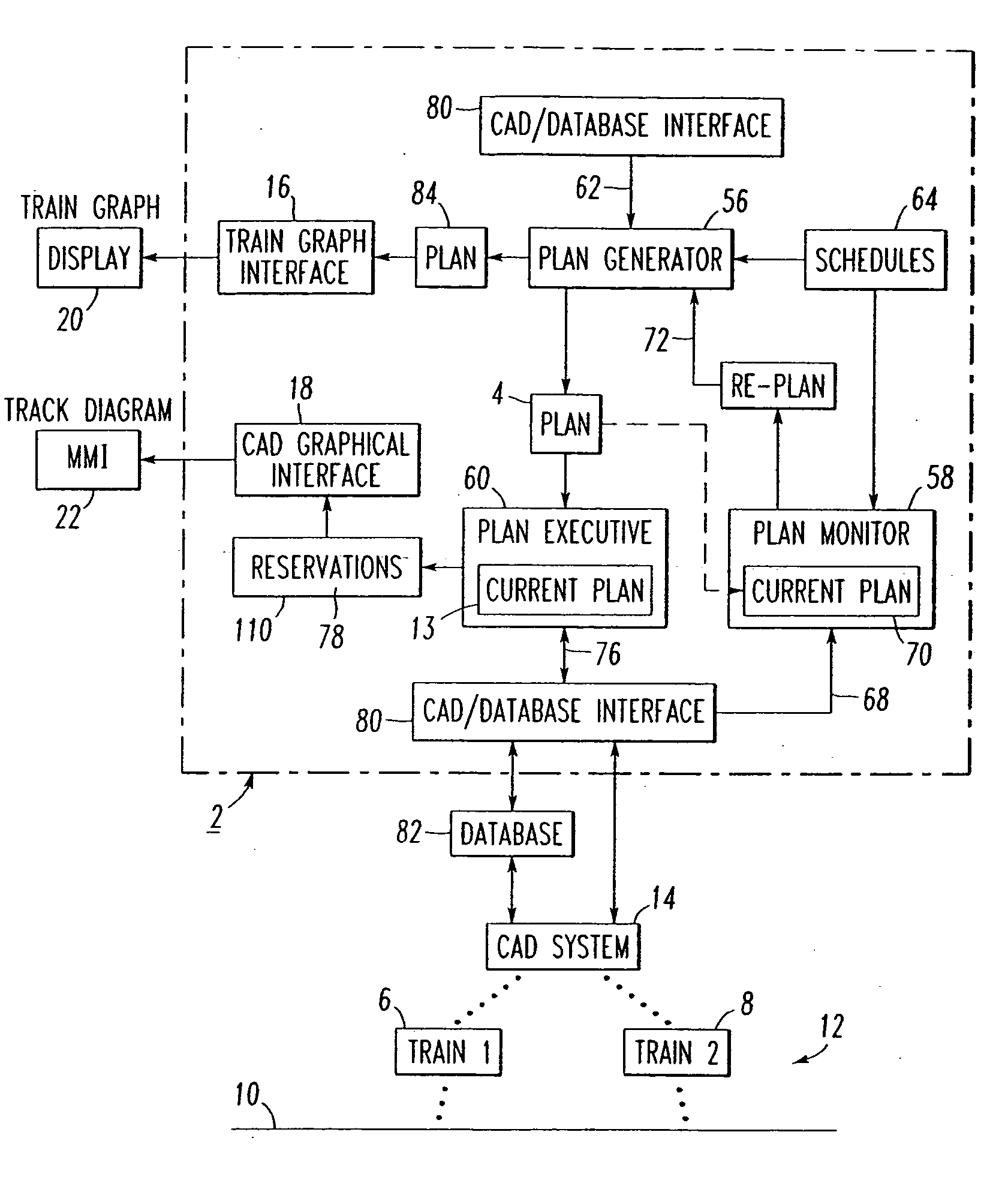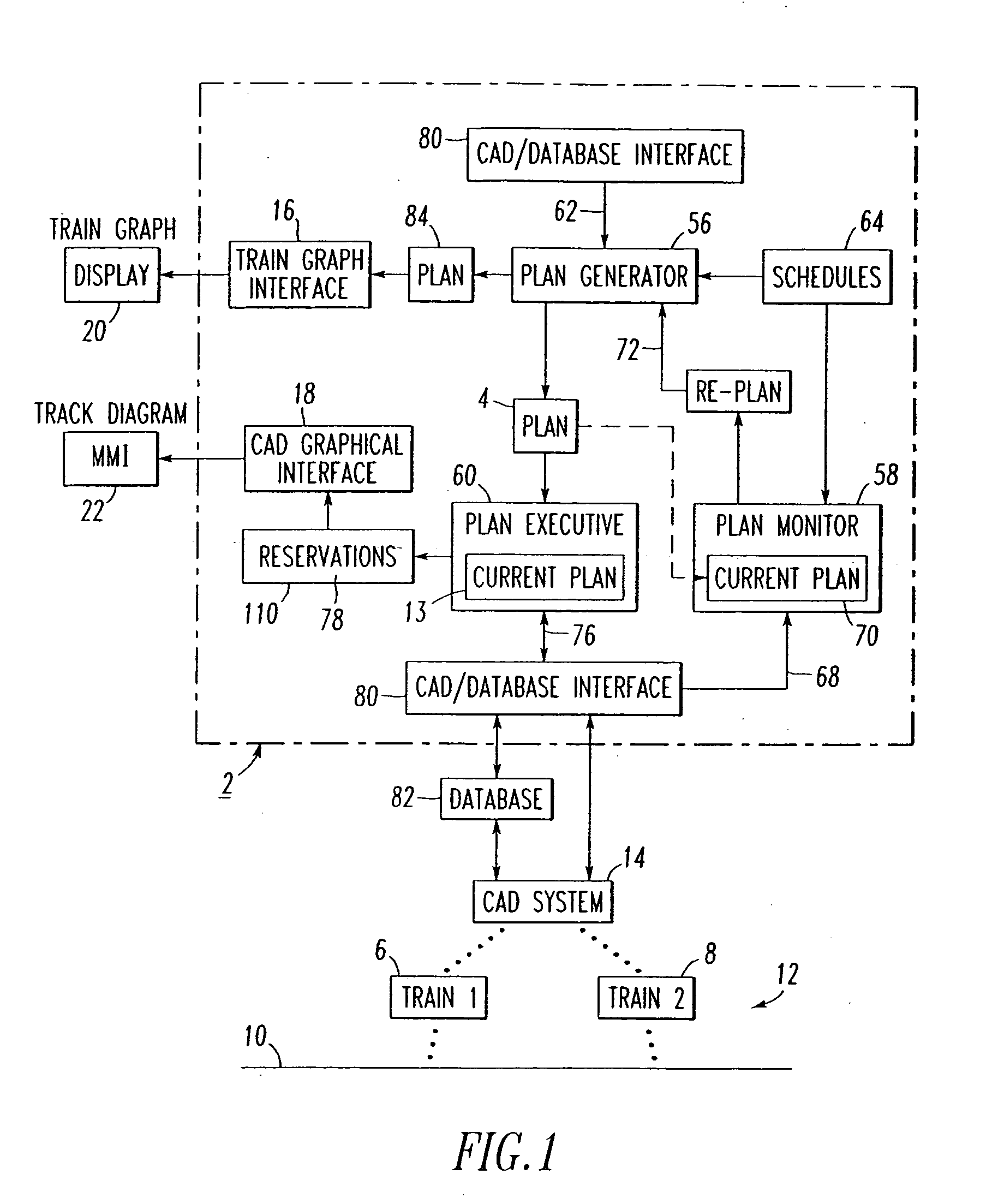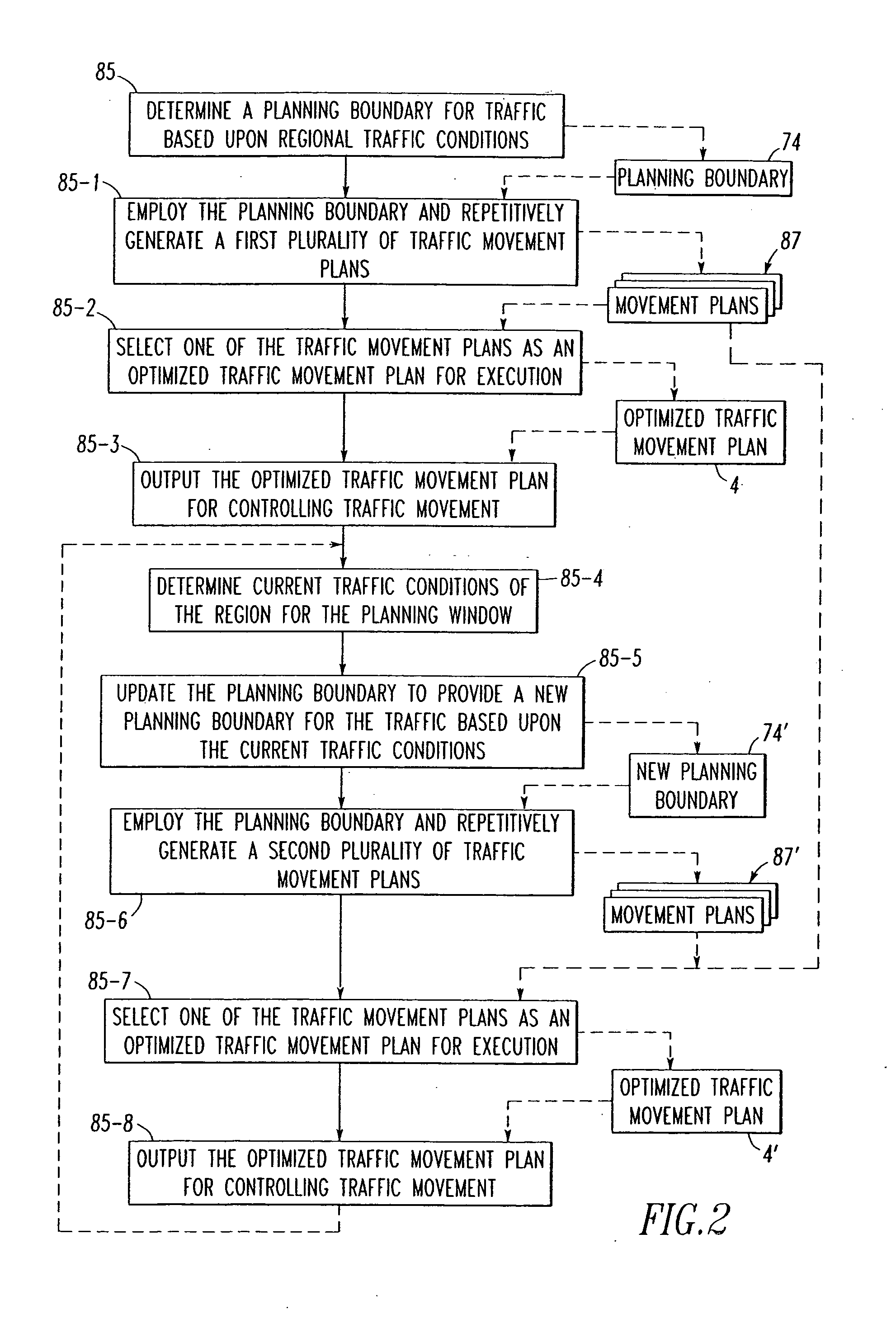Dynamic optimizing traffic planning method and system
a traffic planning and dynamic optimization technology, applied in the field of traffic planning methods, can solve problems such as device failure, known to employ a non-optimizing traffic planner, and inability to optimize the movemen
- Summary
- Abstract
- Description
- Claims
- Application Information
AI Technical Summary
Benefits of technology
Problems solved by technology
Method used
Image
Examples
example 1
[0051] The generation of movement plans observes various limitations (e.g., track speed limits; permanent speed limits; temporary speed limits) and constraints (e.g., train type, such as passenger versus freight; power type: diesel, AC, DC; train height, length, weight, width and other consist characteristics, such as, for example, dangerous goods). Also, movement plan generation observes intrinsic characteristics of the railroad devices and wayside equipment (e.g., switches and interchanges) that may further limit the generation of the movement plan. For example, the usage of a track section prohibits the usage of another track section that may or may not be connected. As another example, a track section that includes a switch in the normal position prevents the use of another track section that includes the same switch in the reverse position for a certain period of time that depends on the use of the former track section. A combination of switches in an interchange limits the use...
example 2
[0064] For example, as shown in FIG. 9, various trains, such as train 24 (only one is shown), already occupy the track sections 26,28 of the reservations 30,32 under execution. The committed reservations 34,36,38 include reservations already allocated by the DOTP 2. Such committed reservations are not reversed by the DOTP 2; however, manual intervention may reverse them, assuming that it is safe to perform that operation. The trains are expected to move in the very near future according to these reservations and have been given “authority” to do so. In general, this means, for example, that signal lamps feature aspects that allow movement of the trains over the track sections 40,42,44 controlled by them. When trains are expected to continuously move, multiple reservations for each train may be included within this deep planning boundary 45. A train stop (e.g., at a station or because of traffic conditions) may cause a reduced number (e.g., down to zero) of committed reservations (an...
example 4
[0080] Equation 6 shows an example of an overall objective function including a plurality of individual goals.
F=F(f1,f2, . . . fn) (Eq. 6)
wherein: [0081] F is the overall objective; [0082] fi is an individual goal of the overall objective; [0083] n is the number of individual goals; and [0084] i is between 1 and n.
PUM
 Login to View More
Login to View More Abstract
Description
Claims
Application Information
 Login to View More
Login to View More - R&D
- Intellectual Property
- Life Sciences
- Materials
- Tech Scout
- Unparalleled Data Quality
- Higher Quality Content
- 60% Fewer Hallucinations
Browse by: Latest US Patents, China's latest patents, Technical Efficacy Thesaurus, Application Domain, Technology Topic, Popular Technical Reports.
© 2025 PatSnap. All rights reserved.Legal|Privacy policy|Modern Slavery Act Transparency Statement|Sitemap|About US| Contact US: help@patsnap.com



